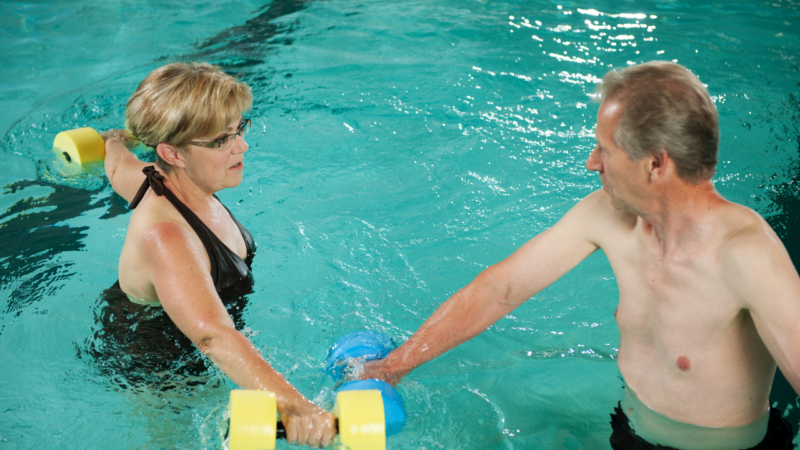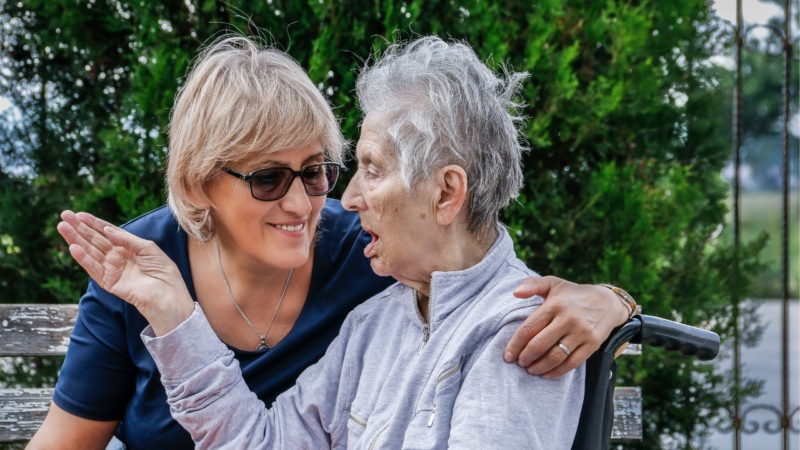What is a stroke?
The brain is supplied with oxygen and nutrient rich blood carried through blood vessels called arteries.
A stroke occurs when these arteries are either burst or blocked, and blood flow to a part of the brain is impeded. Strokes affect everyone differently but it can generally impact “how you think, behave, use words, swallow, see, feel, touch, and move your body”. (Stroke Foundation Australia, 2021).
How important is exercise after a stroke?
Exercise is an essential part of maintaining your health through stroke recovery, rehabilitation and the rest of your life.
Exercise can keep you strong and healthy, both physically and mentally. This is important in reducing the risk of another stroke and helping to improve your quality of life.
What exercises should I do after a stroke?
Aerobic exercise such as walking as well as peddling on a stationary bike are strongly recommended along with water aerobics, resistance training, and balance and stretching exercises.
Your physiotherapist will help determine which exercises are best for you based on what has been affected by your stroke.

How aerobic exercises help after a stroke
Aerobic exercises following a stroke are very important and should be part of your daily routine. The benefits of aerobic exercise include reducing blood pressure, building your muscle strength, coordination, balance, weight loss, endurance, and mental health. This all increases your energy to be more active throughout the day.
Benefits of physiotherapy exercises after a stroke
Some benefits of exercising after a stroke have already been discussed, let’s take a look at some specific treatments your physiotherapist may suggest for you.
- Walking and Balance: After a stroke the signal from your brain to your lower limbs, muscles and joints can be affected. This can make it challenging to stand and walk. Walking independently after a stroke is often a key goal and makes it easier to move around your home and in the community and reduces your risk of falls.
- Strength and resistance training: Strength is often reduced following a stroke, especially on the affected side. Exercises to regain strength can include weightlifting, resistance bands and other exercises such as standing and sitting repetitively. Increases in muscle strength making everyday things like climbing stairs, getting up from a chair and carrying groceries safer and easier for you.

- Task-oriented and functional training: This is about practicing everyday activities that help you function in real life from day to day. This improves functional outcomes and your overall quality of life.
- Constraint-induced movement therapy: This is specifically used to improve the use of your arms. An example may be wearing a sling on your unaffected side to force you to use your affected arm more and therefore improve its strength and function.
- Motor imagery and mental practice: Imagining performing a task or body movement stimulates the nervous system. This helps to stimulate the part of your brain that controls the needed movement and can help with improving function. (Han, 2017)
In summary, recovery from stroke requires a steady, repetitive program of walking and exercise to be effective.
Research shows that recovery from a brain injury never stops. Stroke is a complex condition, which can impact your ability to exercise safely. An individualised exercise plan by a physiotherapist will set you up properly to meet your needs and abilities.
Reference:
Clinical evidence of exercise benefits for stroke, Han P, Zhang W, Kang L, Ma Y, Fu L, Jia L, Yu H, Chen X, Hou L, Wang L, Yu X, Kohzuki M, Guo Q. Adv Exp Med Biol. 2017.
Stroke Foundation Australia. (2021). Retrieved 2021, from https://strokefoundation.org.au/

 1300 797 793
1300 797 793
